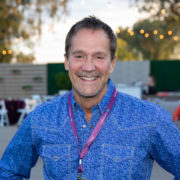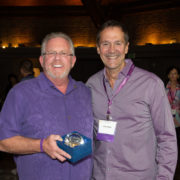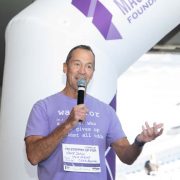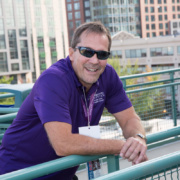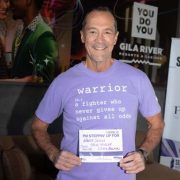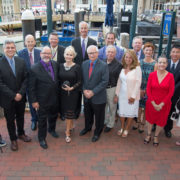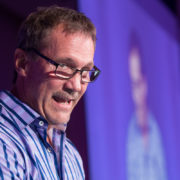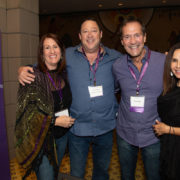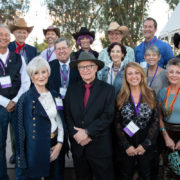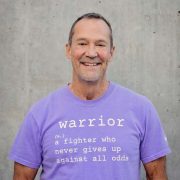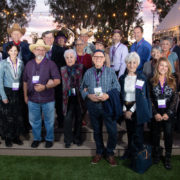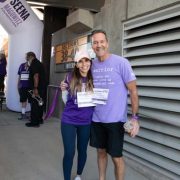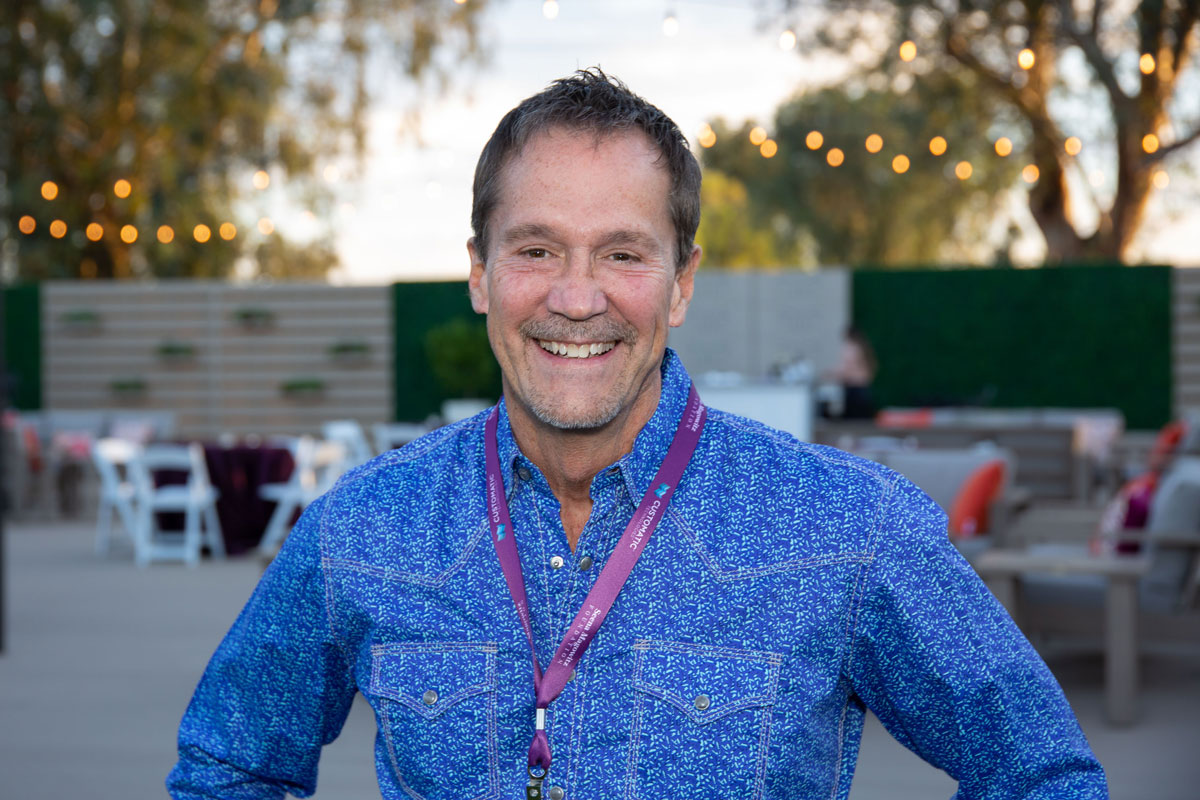
STANLEY VITIKAS: WARRIOR & FUNDRAISER
17 Years Strong: Pancreatic Cancer Patient-Turned Prolific Fundraiser Stan Vitikas Raised More Than $500,000 for Research
Updated By Julia Braband
February 2025
Diagnosed: July 2007
Status: No Sign of Active Cancer
Stan Vitikas didn’t expect to be contemplating major surgery as a healthy 47-year-old, but when a routine physical revealed a dilated pancreatic duct, a high-risk indicator for pancreatic cancer, and doctors discovered a small mass on his pancreas soon after, he found himself seeking second opinions and poring over all the information he could get his hands on. Educated and informed, Stan decided to move forward with the Whipple procedure in May of 2008 to remove the mass that doctors believed to be the early stages of pancreatic cancer.
“I didn’t have any other symptoms at all; no pancreatitis, no pain,” Stan said, of the days preceding his diagnosis. “I simply went in for a physical, had slightly elevated glucose, and later, elevated lipase enzyme. My primary doctor (thankful to have him!) recommended a CT scan which revealed a dilated duct.”
His surgeons successfully removed what turned out to be a Stage 1, Grade 3 adenocarcinoma. After Stan recovered from surgery, he underwent six months of adjuvant chemotherapy and thirty days of radiation therapy to reduce likelihood of recurrence.
His condition remained stable for several years following his Whipple, but after four years he began experiencing complications related to residual scarring, resulting in several bouts of acute pancreatitis. As a result, his care team wound up performing a second Whipple procedure on Stan in January 2014, after which he remained mostly pain-free for the next five or so years.
By 2018, though, Stan’s pancreatitis returned, and by 2019, it became severe enough to warrant hospitalization. At this point, he wasn’t a candidate for surgery, so as an alternative, his May Clinic Endoscopist, the world-renowned Norio Fukami, M.D., performed a breakthrough endoscopic procedure, dilating the stricture and inserting several stents via a complex procedure through the bottom of the stomach, as multiple resections precluded a typical endoscopy.
“After two Whipples, you end up with your intestines kind of repacked at right angles – it’s impossible to get a scope through all that,” Stan said. “So, the doctor used an unconventional approach I’m not sure had ever been done before. I got really lucky (again), otherwise life would be very difficult. I’m forever grateful for God’s blessing, and three outstanding doctors (my PCP, Surgeon and Endoscopist).”
Now, in late 2024, Stan still deals with frequent stent placements to accommodate strictures resulting from two Whipple procedures. He has otherwise largely remained healthy and cancer-free in the years since his diagnosis. He has however become pre-diabetic, but with a controlled diet and increased exercise, though, Stan is optimistic about his chances of keeping diabetes at bay.
“It’s been a journey,” Stan said, “but I have been blessed … multiple times.”
Having survived one of the deadliest forms of cancer, Stan returned to some sense of normalcy with a perspective that was forever changed.
“I was lucky my cancer was caught early, but in that moment when you’re waiting to hear if your cancer has spread, you start to think about your legacy and what you should do with the rest of your life when you consider it can be taken away.”
This realization, along with immense gratitude for his positive outcome, incited a passionate commitment for helping others with pancreatic cancer. It started with Stan undergoing Educated Advocate training and joining 300+ other purple-clad volunteers in Washington D.C. to lobby congressional leaders for increased federal funding for pancreatic cancer research. Stan also became a patient advocacy liaison for the Pancreatic Cancer Action Network (PanCAN), and he counsels and offers support to others facing the same diagnosis he did.
Stan’s experience in Washington, D.C. was very insightful, and helped him understand the daunting scope of fighting this disease, and hearing for the first time that “cures follow money”; that increases in survival rate for any major cancer or illness is driven by research and funding, which is driven by advocacy and awareness.
Raising More Than $500,000 for Research
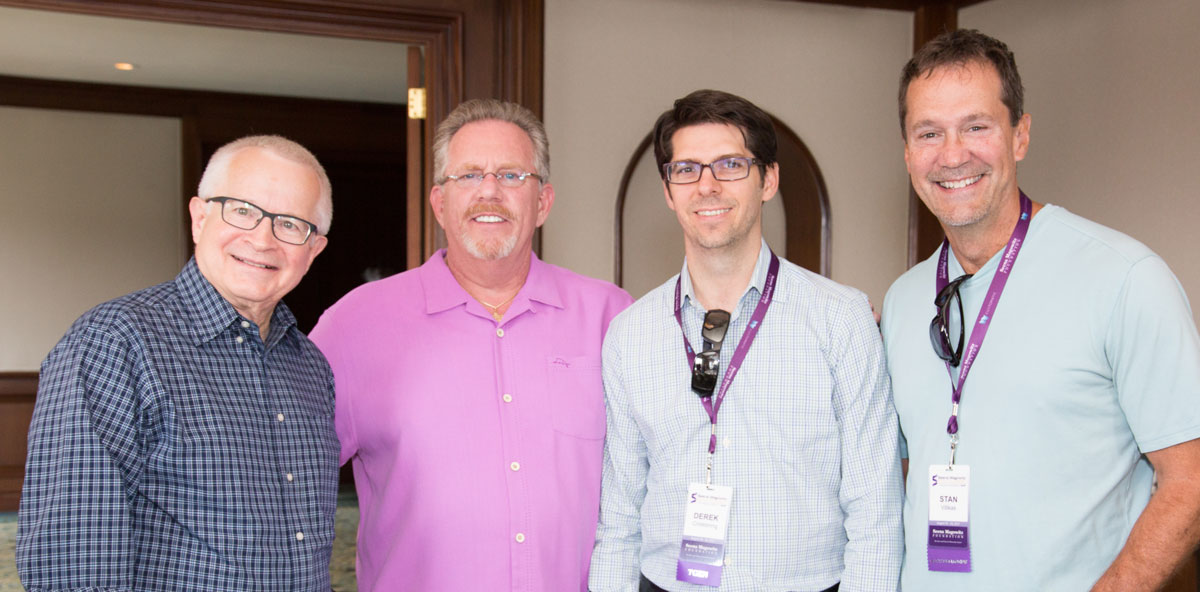
Hoping to help advance research efforts even further, Stan connected with Roger Magowitz, the founder of the Seena Magowitz Foundation.
“Roger has had a profound impact on me,” Stan shares. “His call to action, ‘If not me, then who,’ along with his passion, commitment and dedication, inspired me to do more. He is relentless in his commitment to the cause, and he leads by example.”
Stan agreed to help raise funds and recruit golfers for the Seena Magowitz Foundation’s annual fundraiser, which, at that point, was a golf tournament held in his home state of Arizona. That year, he raised about $4,000 for the cause.
It felt good to give back, and Stan began dedicating even more time and energy to fundraising efforts.
“It’s a process to learn how to ask people for support. Asking can be uncomfortable, but I believe the cause is greater than my discomfort. Danny Thomas, who created St. Jude Children’s Hospital, which today has over 10 million donors, was often asked ‘How do you ask people for money?’ His answer was quite simple; “Ask proudly, for the cause is so worthy”. Enough said.
Hence Stan found that many people not only said yes to contributing, but also thanked him for his efforts.
“People understand how devastating pancreatic cancer can be,” Stan said. “You often don’t need to say anything more than, ‘It’s pancreatic cancer – can you help?’”. They want to help, they’re happy someone is asking.
Stan has also found through his ongoing fundraising that grassroots efforts are often the most effective.
“A hundred people can do more than one person, so by expanding my network of potential donors, I was able to multiply the contributions,” Stan said.
Stan notes, too, that gratitude goes a long way in terms of keeping donors coming back each year.
“Roger [Magowitz, the founder of the Seena Magowitz Foundation] calls every one of my donors, and they often can’t believe that,” Stan said. “They can’t believe the chair of the foundation calls to give a personal thanks for something as simple as a $100 donation. He’s an inspiration, not only to myself, but to many, including donors. His passion, sincerity and gratitude have inspired many and continue to do so today. A great leader inspires people to step up and contribute, and Roger and the Seena Magowitz Foundation have been world-class leaders.”
Building on the momentum from prior fundraising efforts, Stan helped orchestrate the Seena Magowitz Foundation’s most recent fundraiser, a “Steppin’ Up for Pancreatic Cancer” walk at Arizona State University, where he works as a professor. In its first year, the walk attracted more than 300 participants and raised over $70,000 for pancreatic cancer research, amplifying the impact of the foundation’s mission even further.
In total, Stan’s efforts have helped raise more than half a million dollars – $566,000, to be exact – for pancreatic cancer research, paving the way for critical advancements in the fight against the disease.
Paying It Forward
While today, Stan has 17 years of survivorship under his belt, he hasn’t forgotten what it feels like to face a new pancreatic cancer diagnosis.
“It’s easy to feel helpless and hopeless,” Stan recalls. Although his surgeon exuded hope that fueled Stan to keep fighting, he laments not being able to meet a survivor until the latter part of his treatment. Through his work with the Pancreatic Cancer Action Network and the Seena Magowitz Foundation, he has become that survivor for others, offering insight and a listening ear for those fighting the disease, preparing for a Whipple surgery or dealing with the after-effects of the operation.
“With pancreas cancer, hope is essential” he said. “I want people to know that there are many long-term survivors of this disease and that advances are being made.”
Stan also credits much of his own success to what he calls “The Four Fs: Faith, Family, Friends & Fitness.” These constants have anchored him throughout the ups and downs of his journey, with faith giving him purpose, family offering support, friends sharing in both triumphs and challenges and fitness allowing him to maintain his strength and mental well-being along the way. I find these principles as guidelines for navigating everyday life, let alone fighting cancer. Focus on what manners the most in life, as all else falls by the way side when you’re faced with a life-threatening diagnosis.
“Focus on your faith, close friends, family – and take care of yourself,” Stan said. “Because you will face adversity, and the healthier you are, the better positioned you are to deal with that adversity.”
Stan also encourages anyone who’s fought a successful battle with pancreatic cancer to consider helping raise funds for research.
“We’ve all got to get out there and help, because Roger, the researchers and doctors can’t do it alone,” he said. “I feel I was blessed with survival, and must pay it forward. I was granted survival for a reason, and I cannot forget that, must do what I can to pay it back. When you advocate for a cause as noble as this, it is more rewarding for you than those you’re helping.”
Stan also offered evidence of the fundraising efforts’ impacts, to date. For example, some of the funds raised by the Seena Magowitz Foundation support the doctors and researchers at The Medical College of Wisconsin (MCW), one of the nation’s leading pancreatic cancer care institutions. While, nationally, the five-year survival rate for those with pancreatic cancer hovers around 13%, Dr Douglas Evans at MCW noted that rate is closer to 30% for patients receiving treatment at MCW, a world class cancer facility, another powerful basis for hope.
Raising awareness about MCW and other world-class medical facilities and resources is an important part of the process, as survival rates substantially increase when patients have access to world class care.
Finally, Stan urges everyone in the pancreatic cancer community, from oncologists and researchers to donors and patients, to emphasize hope and optimism and instill these sentiments in those who need them the most. He still recalls something particularly poignant the surgeon who performed his Whipple Surgeries, renowned Mayo Clinic surgeon Dr. Adyr Moss, M.D., said to him after Stan voiced concerns about statistics and poor prognoses for he and others with pancreatic cancer.
“He’d said, ‘Don’t believe any of that stuff; you’re going to live to be 80 and die of something else,’” Stan recalled the doctor saying. “It still tears me up to remember that. It made me believe – and here I am 17 years later. Dr Moss may not have realized it at the time, but he saved my life more than once; with his skill, and his words of hope.”
Stan continues to closely monitor his condition and remains active in pancreatic cancer research fundraising efforts. He has remained cancer-free since his first Whipple procedure on May 22, 2008, a date he’ll never forget.

